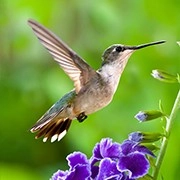Goldfish "Lying Flat"

Hey Lykkers, are your goldfish OK in their box? First it’s important to understand that goldfish don't have eyelids, so their sleep patterns are very different from humans.
Goldfish often rest at the bottom of the tank during the night or in low-light conditions, which is completely normal behavior.
Experts point out that as long as the goldfish quickly regain their energy when the light returns, it means they are just in a natural sleep state and not in any life-threatening situation. Therefore, don't panic when you see your goldfish lying at the bottom—observing their behavior after waking up is key.

Decoding Three "Lying Flat" Modes of Goldfish
1. "Working Fish" Mode – Normal Nighttime Rest
Those glowing cat eyes at night? Not just reflection—something far more sinister lurks.
What if your cat is producing soft stools? Here are the reasons and measures!
Why Brown Bears Are the Ultimate Survivors of the Animal Kingdom!
Your parrot's sudden behavior changes? It might be slowly poisoning itself in your home!
Your dog has become surprisingly "well-behaved" lately? Not destructive, not noisy, quiet as an angel?
Does the Legendary Bluebird of Happiness Really Exist? The Truth Will Surprise You!
Just like humans need sleep after a long day, goldfish rest at the bottom of the tank when the lights are off. This is a physiological "sleep" phenomenon. Once the lights are back on, they will return to their active state. Aquaculture experts have repeatedly emphasized that this is part of a goldfish's normal routine and nothing to worry about.
2. "Socially Anxious Newcomer" Mode – Environmental Adaptation Period
When the tank water is changed or a new fish is introduced, goldfish may appear temporarily lazy due to sudden environmental changes.
Similar to how newcomers feel uneasy in a new environment, simply maintain the water temperature above 20°C and keep the lights off for 2 days to allow the goldfish to adapt. Industry professionals remind us that a stable environment is crucial for goldfish health.
3. "Sickly Fish" Mode – Disease Warning Signs
If a goldfish lies at the bottom for 3 consecutive days, accompanied by refusal to eat and clamped fins, it may be suffering from gill disease or enteritis.
Immediately check if the gills are pale or if the bottom is swollen, and contact a professional aquatic veterinarian if necessary. Some experts recommend initiating emergency measures promptly to prevent the condition from worsening.

Race Against Time: Five-Step Goldfish First Aid Guide
For severely ill goldfish, follow these five steps to provide timely care and save your pet:
1. Isolate for Intensive Care
Upon noticing abnormalities, immediately move the sick fish to a separate quarantine tank with the water temperature adjusted to around 28°C. This prevents cross-infection and allows for focused treatment. Experts emphasize that isolation is the most critical step in the first aid process.
2. Water Quality Overhaul
Replace 1/3 of the water and add an appropriate amount of sea salt (recommended concentration: 0.3%) to improve water quality and disinfect. Ensure the temperature difference between the new and old water does not exceed 1°C to avoid stressing the fish.
3. Targeted Measures for Enteritis
For treating enteritis, try adding garlic powder to the feed (ratio: 1g powder per 100g feed) or use a gentamicin bath (recommended dosage: 80,000 units per 50L of water) to inhibit bacterial growth. Always follow professional veterinary advice for specific dosages and methods.
4. Precise Treatment for Gill Disease
For gill disease, a common treatment is using methylene blue solution. Prepare a concentration of 2mg/L and soak the fish for 15 minutes daily for 3 days to improve gill condition. This method has been applied in some fish farms but should be adjusted based on the actual situation.
5. Fasting Adjustment – Lightening the Load
If the goldfish is in poor condition, consider fasting for 3 days to allow its digestive system to rest and recover. Experts suggest that proper fasting is more effective than blindly administering medication. However, closely monitor the goldfish's condition during this period and adjust the plan as needed.

Prevention First: Scientific Fishkeeping and Detail Management
In addition to timely first aid, preventive measures are equally important. Good fishkeeping habits not only reduce the risk of disease but also significantly improve the quality of life for your goldfish. Here are some key tips repeatedly emphasized by professional fishkeepers and authoritative organizations:
1. Gentle Water Changes
Change no more than 1/4 of the water at a time, ensuring the temperature difference between the new and old water does not exceed 1°C. Frequent large water changes or drastic temperature fluctuations can stress goldfish and even trigger diseases.
2. Scientific Feeding, Proper Portions
Avoid overfeeding goldfish. Small, frequent meals are ideal. Remove any uneaten food after 1 minute to prevent water quality deterioration. This point has been repeatedly highlighted in recent training sessions by agricultural departments.
3. Comprehensive Equipment Maintenance
Heaters and oxygen pumps are essential for maintaining a stable environment. Keep them running 24/7, especially during winter or seasonal transitions, as stable water temperature is crucial for goldfish health. Regulatory authorities have also noted that aging or malfunctioning equipment is a major cause of fish diseases.

Goldfish lying at the bottom of the tank doesn't necessarily indicate a crisis. It requires scientific judgment based on different situations. Normal rest, environmental adaptation, and illness signals each have distinct characteristics. By maintaining stable water quality, appropriate temperature, and a scientific feeding routine, goldfish can usually recover within 1 to 3 days. However, if abnormal behavior persists, immediately initiate isolation and first aid measures to prevent the condition from worsening.

 · Animal Team
· Animal Team